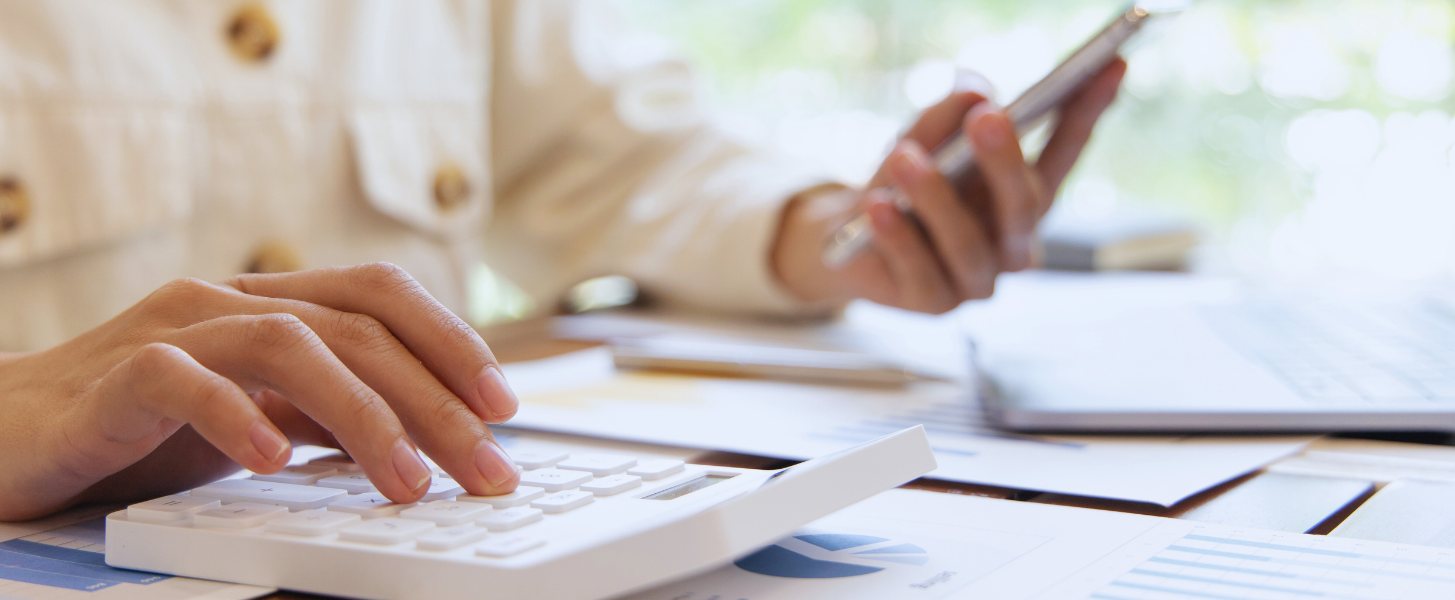In the world of commercial real estate, managing expenses effectively is crucial for both landlords and tenants. One key aspect of this is Common Area Maintenance (CAM) Reconciliation. CAM expenses are shared costs that tenants in a commercial property must pay to maintain common areas. Understanding CAM Reconciliation is essential for ensuring transparency and fairness in these cost allocations.
What is CAM Reconciliation?
Common Area Maintenance (CAM) Reconciliation is the process of balancing the CAM expenses collected from tenants against the actual expenses incurred by the tenant pays the landlord. It ensures that tenants only pay their fair share of the costs associated with maintaining common areas, such as lobbies, parking lots, and landscaping.
Why is CAM Reconciliation important for landlords and tenants?
1. Transparency and Trust
Accurate CAM Reconciliation fosters transparency between landlords and tenants, building trust and minimizing disputes when tenants pay up over expenses. When tenants understand how their contributions are calculated and used, they are more likely to accept and comply with the charges.
2. Financial Accuracy
For landlords, CAM Reconciliation ensures that the actual expenses are covered, and there is no shortfall or overcharge. It helps in maintaining accurate financial records and budgeting for future maintenance costs.
3. Legal Compliance
CAM charges are often stipulated in lease agreements. Proper CAM Reconciliation helps in adhering to these agreements, avoiding legal disputes and ensuring compliance with lease agreement terms.
The CAM Reconciliation Process
1. Estimate CAM Charges
At the beginning of the lease term, landlords typically estimate the monthly CAM payments and charges based on historical data and projected expenses. These estimates are used to calculate the fixed monthly payment and CAM fees charged to tenants.
2. Collect CAM Payments
Tenants make regular payments, usually monthly or quarterly, based on the estimated CAM charges. These payments contribute to covering the anticipated common area expenses.
3. Actual Expense Calculation
At the end of the year, landlords calculate the actual expenses incurred for maintaining the common areas. This involves reviewing bills, invoices, and other financial records to determine the total costs.
4. Reconciliation Statement
A CAM Reconciliation statement is prepared, comparing the estimated actual CAM expenses and charges collected from tenants against the actual expenses. The statement outlines any discrepancies and the resulting adjustments.
5. Adjustments
If the actual expenses are higher than the estimated charges, tenants are required to pay the difference. Conversely, if the estimated charges exceed the actual expenses paid, tenants receive a refund or a credit towards future monthly payments due.
Legal Considerations in CAM Reconciliation
Legal aspects of CAM Reconciliation are critical for ensuring compliance and avoiding disputes. Here are some key legal considerations:
1. Compliance with Lease Agreements
CAM charges must comply with the terms outlined in the lease agreements. This includes adhering to specified expense categories, allocation methods, and any caps or limitations on net lease amount.
2. Adherence to Local Laws and Regulations
Landlords and tenants must comply with local laws and regulations governing CAM charges. This includes adhering to regulations related to expense disclosure, allocation methods, and dispute resolution procedures.
3. Documenting Expenses
Proper documentation of CAM expenses is essential for legal compliance. Landlords should maintain detailed records of all expenses, including invoices, receipts, and maintenance logs, to justify the charges to tenants and regulatory authorities.
4. Dispute Resolution Mechanisms
Lease agreements should include clear mechanisms for resolving disputes over CAM charges. This can include mediation, arbitration, or litigation, depending on the nature of the dispute and the preferences of the parties involved.
Detailed Breakdown of CAM Expenses
Understanding the intricacies of CAM expenses can help in better management and reconciliation of these costs. Here’s a closer look at some of the key components of cam costs:
1. Maintenance Costs: A Closer Look
Maintenance costs can vary widely depending on the type of property and its location. These costs often include:
– Janitorial Services: Regular cleaning of common areas like lobbies, hallways, and restrooms.
– Landscaping: Maintenance of outdoor areas, including mowing lawns, trimming bushes, and seasonal plantings.
– Repairs: Routine maintenance and minor repairs, such as fixing lighting fixtures, repairing walkways, and maintaining HVAC systems.
2. Utility Costs
Utilities are essential for maintaining a comfortable and functional environment for tenants. These costs can include:
– Electricity: For lighting common areas, powering security systems, and other electrical needs.
– Water and Sewer: Costs for water used in common areas, including restrooms and irrigation systems.
– Gas: For heating common areas and running any gas-powered equipment.
3. Property Management Fees
Property management fees cover the costs of hiring a professional firm to manage the property. These fees typically include:
– Administrative Costs: Handling tenant communications, managing maintenance schedules, and ensuring that tenants paid in compliance with regulations.
– Operational Costs: Overseeing day-to-day operations, including coordinating maintenance activities and managing service contracts.
4. Insurance Costs
Insurance costs for common areas are critical for protecting the property and its occupants. These costs may include:
– Liability Insurance: Covers legal liabilities in case of accidents or injuries in common areas.
– Property Insurance: Protects against damage to the common areas due to natural disasters, vandalism, or other unforeseen events.
5. Security Costs
Security costs are vital for ensuring the safety and security of the whole property owner. These costs can include:
– Security Personnel: Hiring security guards to patrol the property and monitor security systems.
– Surveillance Systems: Installing and maintaining security cameras, alarm systems, and access control systems.
Steps to Streamline CAM Reconciliation
To make the CAM Reconciliation process more efficient and accurate, consider the following steps:
1. Use Technology for Record-Keeping
Utilize property management software to track expenses and manage records. These tools can automate many aspects of CAM Reconciliation, reducing the risk of errors and streamlining the process.
2. Implement Regular Reviews
Conduct regular reviews of CAM expenses and tenant charges throughout the year. Regular reviews help in identifying discrepancies early and making necessary adjustments before the end-of-year reconciliation.
3. Educate Tenants
Provide tenants with information and resources to help them understand CAM expenses and the reconciliation process. This can include informational brochures, FAQs, and dedicated tenant meetings.
4. Establish Clear Procedures
Develop clear procedures for handling CAM Reconciliation, including steps for calculating expenses, preparing reconciliation statements, and managing disputes. Clear procedures help ensure consistency and transparency in the reconciliation process.
Impact of CAM Reconciliation on Tenants and Landlords
Understanding the impact of CAM Reconciliation on both tenants and landlords is crucial for fostering a cooperative relationship and ensuring the financial health of the property.
1. For Tenants
CAM Reconciliation helps tenants understand the actual costs of maintaining the common areas they benefit from. It ensures they are only paying their fair share and not subsidizing other tenants’ usage. Accurate reconciliation can also help tenants plan their budgets more effectively by providing a clear picture of their financial obligations.
2. For Landlords
For landlords, CAM Reconciliation is essential for recovering the costs associated with maintaining and operating the property. It helps ensure that all expenses are accounted for and that there is no financial shortfall. Effective reconciliation can also enhance tenant satisfaction and retention by demonstrating transparency and fairness in cost allocation.
Technological Advances in CAM Reconciliation
The advent of technology has significantly improved the efficiency and accuracy of CAM Reconciliation processes. Here are some key technological advances:
1. Property Management Software
Modern property management software offers features that streamline the CAM Reconciliation process. These tools can automate expense tracking, generate reconciliation statements, and provide detailed reports for both landlords and tenants.
2. Blockchain Technology
Blockchain technology offers a secure and transparent way to record and verify CAM expenses. It provides an immutable ledger that can be accessed by both landlords and tenants, reducing the risk of disputes and ensuring data integrity.
3. Artificial Intelligence and Machine Learning
AI and machine learning can analyze historical data and predict future CAM expenses more accurately. These technologies can also identify patterns and anomalies in expense data, helping landlords optimize maintenance schedules and reduce costs.
4. Digital Communication Platforms
Digital platforms facilitate better communication between landlords and tenants regarding CAM charges. These platforms can provide real-time updates, facilitate discussions, and allow for the digital submission of documents and payments.
Future Trends in CAM Reconciliation
The future of CAM Reconciliation is likely to be shaped by emerging trends and technological advancements. Here are some trends to watch:
1. Increased Use of Automation
Automation will play a larger role in CAM Reconciliation, reducing manual effort and increasing accuracy. Automated systems can handle routine tasks such as data entry, expense tracking, and statement generation, allowing property owners and managers to focus on more strategic activities.
2. Greater Transparency and Data Sharing
There will be a greater emphasis on transparency and data sharing between landlords and tenants. Enhanced data sharing capabilities will allow tenants to access detailed expense reports and reconciliation statements, fostering trust and collaboration.
3. Integration of Sustainability Metrics
As sustainability becomes a priority, CAM Reconciliation may start to include metrics related to environmental impact. This could involve tracking expenses related to energy-efficient upgrades, waste management, and other sustainability initiatives.
4. Adoption of Predictive Analytics
Predictive analytics will become more prevalent, allowing landlords to forecast future CAM expenses with greater accuracy. This can help in better budgeting and planning, reducing the likelihood of significant discrepancies during reconciliation.
Understanding CAM Reconciliation is crucial for both landlords and tenants in commercial real estate as it ensures fair and transparent allocation of common area maintenance and operating expenses, fostering trust and compliance; by following best practices, leveraging technology, and addressing common challenges, stakeholders can navigate the CAM Reconciliation process effectively, leading to more efficient property management, better tenant relationships, and improved financial outcomes for all parties involved.
